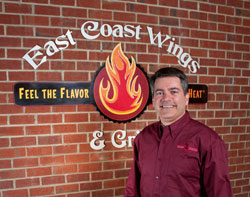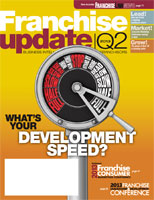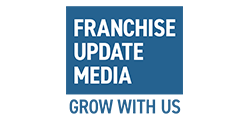Driving Unit Economics: New Division Focuses on Unit-Level Growth
 Throughout my 14 years with East Coast Wings & Grill, we have constantly strived to develop a laser-like-focus on our unit economics. This vision recently led to the creation of a new division for our brand: Unit-Level Economics/QA.
Throughout my 14 years with East Coast Wings & Grill, we have constantly strived to develop a laser-like-focus on our unit economics. This vision recently led to the creation of a new division for our brand: Unit-Level Economics/QA.
Systems and structures are logical responses to complexity, which grows almost exponentially as a company expands. Within these systems there is data that, if not measured and held accountable, could be the difference between a franchise unit's bottom line or sustaining a positive one: data drives prediction, data holds accountable the result.
The ultimate goal of imposing a new structure and instituting a new system is, of course, predictability. Unless a brand has the ability to determine where a franchise unit is today and project where it might be tomorrow--in a week, a month, this quarter, and ultimately this year--it is not on a trajectory for growth.
The need to navigate through all aspects of a unit's economics is imperative to that unit's success. In our restaurant industry, market dynamics and cost are changing month by month, which challenges the franchisee's ability to manage their unit-level economics. The need for the franchisor to identify these changes and have the ability to predict and assist a franchisee in navigating their unit sales and expenses is going to be the difference between sustaining great unit-level economics or building them.
- The first 4 years. Building a franchise system from the ground up was not easy and definitely had its challenges. And while we have made plenty of mistakes along the way, the one thing we did not unhinge was the philosophy of "managing from the outside in." In other words, our corporate structure focused on spending quality time working on franchisee and unit-style issues daily--before we spent time and energy in growing a new unit. The brand would grow only under the understanding that no unit would be left unaccountable to our standards of operations; thus, our slower new-unit growth model evolved. We had, and have, all the traditional franchise tools, including (but not limited to) ongoing training, field inspections, and annual P&L reviews for franchisee support. Our focus was on the individual unit, one at a time.
- The next 4 years (to July 2012). During these years we enhanced our unit-level support through many evolving changes. We strengthened our units by adding Internet-based training that our franchisees had access to at their sole discretion. We hired an executive corporate chef who, among other duties, was charged with retraining our units in portion control and waste management. We amended our existing franchise agreements and implemented monthly P&L reporting in new ones. The franchisees unanimously voted in a self-regulated fining system for unit-level specs non-compliance and authorized ECW Corp. as facilitator of this system.
During these years, of course, we all dealt with the Great Recession. For East Coast Wings & Grill, the recession brought opportunity. We reevaluated our supply chain, leveraged our buying power with manufacturers on our proprietary products, and beat down our cost on space. We began charting indices, which affected our operational space. This paradigm shift in our ability to drive a difference in unit-level economics and profitability soon became visible: in our 2012 FDD we reported an average 58 percent growth in same-store EBITDA from 2009-2011. - This past year. We announced qualified franchisee financing to the tune of $7.5 million--and not with exorbitant interest rates, which eat into the franchisee's profits. In February, we took a big step in refining our philosophy of "managing from the outside in" by announcing the creation of a Unit-Level Economics/QA division.
- Unit-Level Economics/QA division. This is our "crème de la crème" approach for data gathering, metrics development, and quality assurances for the brand and unit level. The director and their staff will focus on all aspects of every facet of numbers a unit could and should encounter. They will dive into P&Ls, preferred vendor expenses, cross-menu sales analysis, unit-level marketing expenses and their relative ROIs, trend-setting models (proprietary to the brand), table turn analysis, ticket averages analysis, up-selling trends, ongoing space cost analysis, ongoing maintenance costs, and accountability of several proprietary models. This division is the analyst of what the brand determines a unit should be measured by, what a unit should be doing to sustain, and what a unit should be doing to drive the bottom line.
Sam G. Ballas is CEO of East Coast Wings & Grill.
Share this Feature
Recommended Reading:
Comments:
comments powered by DisqusFRANCHISE TOPICS
- Multi-Unit Franchising
- Get Started in Franchising
- Growth
- Operations
- Open New Units
- Leadership
- Marketing
- Technology
- Legal
- Awards
- Rankings
- Trends
- Featured Franchise Stories
FEATURED IN

Franchise Update Magazine: Issue 2, 2013






 The franchise listed above are not related to or endorsed by Franchise Update or Franchise Update Media Group. We are not engaged in, supporting, or endorsing any specific franchise, business opportunity, company or individual. No statement in this site is to be construed as a recommendation. We encourage prospective franchise buyers to perform extensive due diligence when considering a franchise opportunity.
The franchise listed above are not related to or endorsed by Franchise Update or Franchise Update Media Group. We are not engaged in, supporting, or endorsing any specific franchise, business opportunity, company or individual. No statement in this site is to be construed as a recommendation. We encourage prospective franchise buyers to perform extensive due diligence when considering a franchise opportunity.